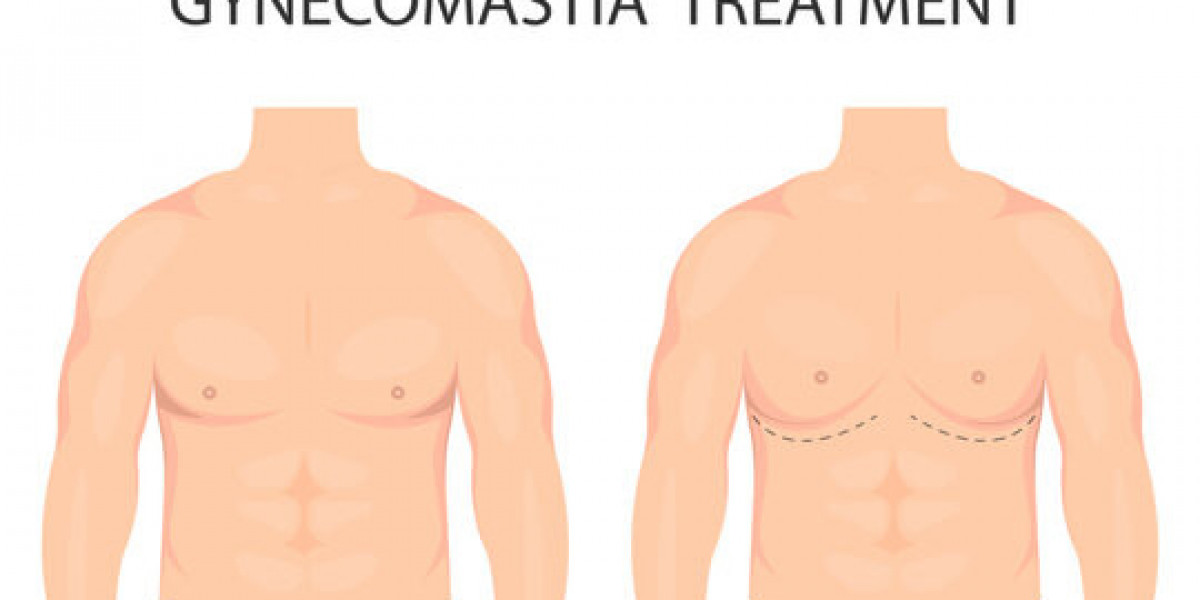Gynecomastia is a common condition in men characterized by the enlargement of breast tissue. It can cause physical discomfort and emotional distress, leading many men to seek treatment, including surgery. However, gynecomastia is not a one-size-fits-all diagnosis. Surgeons in Islamabad differentiate between two primary types: true gynecomastia and pseudo-gynecomastia. Proper diagnosis is crucial to deciding the best treatment approach, and Islamabad’s experienced surgeons utilize a variety of clinical and diagnostic tools to accurately identify the type of gynecomastia a patient has. Gynecomastia surgery in Islamabad offers a safe and effective solution for men seeking to reduce excess chest tissue and restore a more masculine appearance.
Understanding True Gynecomastia
True gynecomastia is defined by the benign proliferation of glandular breast tissue in males. It involves the actual growth of the breast’s glandular elements, which is different from just excess fat accumulation.
Cause: True gynecomastia is often caused by hormonal imbalances, particularly an increase in estrogen or a decrease in testosterone. This can be triggered by puberty, aging, medication side effects, certain medical conditions, or endocrine disorders.
Characteristics: The glandular tissue feels firm or rubbery under the nipple area during a physical exam and is typically concentric, meaning it surrounds the nipple in a circular fashion. Patients often report tenderness or sensitivity in the breast area.
Implications: Because glandular tissue is denser and firmer than fat, it cannot be effectively treated with liposuction alone. Surgical excision of glandular tissue is usually required to address true gynecomastia.
Understanding Pseudo-Gynecomastia
Pseudo-gynecomastia, also called lipomastia, is characterized by an excess of fatty tissue in the chest area without significant glandular proliferation.
Cause: This condition is commonly associated with obesity or weight gain, where fat deposits accumulate in the chest, mimicking the appearance of gynecomastia.
Characteristics: The tissue feels soft and more diffuse compared to true gynecomastia. There is usually no tenderness, and the enlargement is often symmetrical.
Implications: Since pseudo-gynecomastia involves only fatty tissue, it can often be treated with liposuction or non-surgical weight loss methods, although stubborn fat deposits may persist despite diet and exercise.
Mixed or Combined Gynecomastia
Some patients have a combination of both glandular and fatty tissue enlargement. This mixed form requires careful evaluation, as treatment usually involves a combination of gland excision and liposuction for optimal results.
How Surgeons in Islamabad Diagnose True vs. Pseudo Gynecomastia
The diagnostic process in Islamabad’s clinics and hospitals involves several important steps, combining clinical examination, medical history review, and imaging studies when necessary.
1. Detailed Medical History
Surgeons begin by taking a thorough medical history, which helps identify underlying causes or risk factors such as:
Pubertal changes or aging
Use of medications (e.g., steroids, anti-androgens, antidepressants)
History of hormonal disorders
Liver or kidney disease
Exposure to toxins or herbal supplements
This information provides clues to the nature of the breast enlargement and whether hormonal evaluation is necessary.
2. Physical Examination
A careful physical exam is essential in distinguishing true from pseudo-gynecomastia.
Palpation: The surgeon palpates the breast tissue to assess its texture, consistency, and location. Firm, rubbery tissue concentrated beneath the nipple suggests true gynecomastia, while soft, diffuse fat tissue indicates pseudo-gynecomastia.
Symmetry and Size: Surgeons note if the enlargement is symmetrical or uneven, which can also influence treatment plans.
Nipple-Areolar Complex: Any changes in the nipple or areola, such as enlargement or discharge, are documented.
3. Hormonal and Blood Tests
In cases where true gynecomastia is suspected, surgeons in Islamabad often request blood tests to evaluate hormone levels and rule out underlying endocrine disorders. These may include:
Testosterone and estrogen levels
Thyroid function tests
Liver and kidney function tests
Prolactin and other relevant hormones
These tests help identify medical conditions that may require treatment before or alongside surgery.
4. Imaging Studies
While physical exam and history often suffice, imaging can provide valuable insights:
Ultrasound: A non-invasive and commonly used tool to differentiate fatty tissue from glandular tissue. Ultrasound can also detect cysts, tumors, or other abnormalities.
Mammography: In rare cases, particularly in older men or when malignancy is suspected, mammography may be performed.
5. Assessing Body Composition
Since pseudo-gynecomastia relates closely to body fat, surgeons assess overall body composition and weight. Patients with high body fat percentages may be advised to pursue weight loss strategies prior to considering surgical intervention.
Treatment Planning Based on Diagnosis
Once the type of gynecomastia is identified, Islamabad surgeons tailor the treatment accordingly:
True Gynecomastia: Surgical removal of glandular tissue is necessary. This usually involves a small incision around the areola, through which the surgeon excises the firm breast tissue. Liposuction may be added to remove any surrounding fat and contour the chest.
Pseudo-Gynecomastia: Liposuction alone is often sufficient to remove excess fat. Patients may also be encouraged to adopt lifestyle changes including diet and exercise.
Mixed Gynecomastia: A combination of gland excision and liposuction is performed for the best cosmetic results.
Importance of Accurate Diagnosis in Islamabad
Proper diagnosis ensures that patients do not undergo unnecessary surgery or ineffective treatments. For example, liposuction alone will not address true gynecomastia caused by glandular tissue, leading to persistent breast enlargement if misdiagnosed.
In Islamabad, experienced plastic surgeons rely on their clinical expertise, supported by diagnostic tools, to provide individualized care plans. This approach improves surgical outcomes, patient satisfaction, and long-term results.
Conclusion
Distinguishing between true and pseudo-gynecomastia is a critical step in the management of male breast enlargement. Surgeons in Islamabad employ a comprehensive diagnostic process involving medical history, physical examination, hormonal tests, and imaging to identify the exact type of gynecomastia. This ensures that patients receive the most appropriate treatment, whether it is surgical excision, liposuction, or lifestyle modifications.














